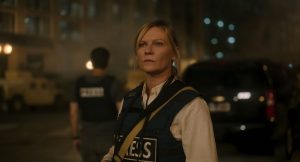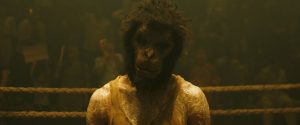Reviews include Civil War, In Flames, and The Greatest Hits.
An Interview With: Ashley McKenzie, TFCA Stella Artois Jay Scott Prize-winner
January 11, 2017
This 2016 winner of the TFCA’s Stella Artois Jay Scott Prize for emerging talent is Ashley McKenzie.
The New Waterford-based director of Werewolf, a drama about a pair of methadone addicts bound by a shared chemical and emotional codependency, fully realizes the promise of McKenzie’s short film career. Her first feature, which manages the difficult feat of working in both formal and emotional terms, exhibits cramped, off-centre compositions which immediately pose a challenge to viewer expectations and an invitation to intimacy. The script treats addiction not as a tragic state of grace, but just one more self-destructive compulsion among many. (The finely gradated interactions between the protagonists and different representatives of various institutional establishments place empathy and ambivalence side by side, where they belong.)
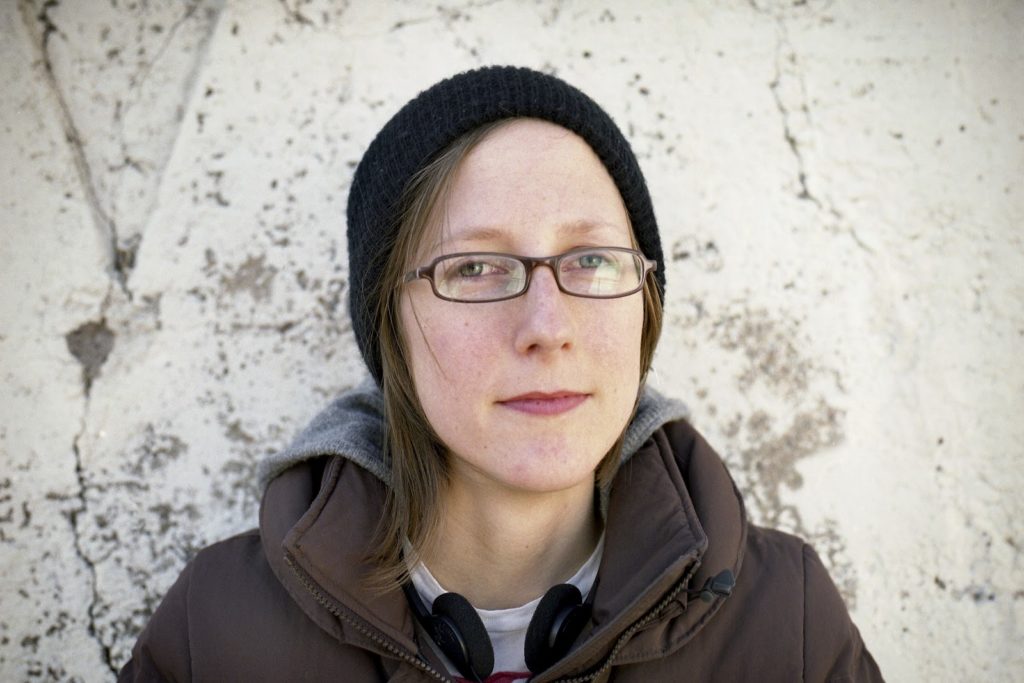
Few first features in recent memory display such a well-rounded command of sound, image, and performance (the acting by Andrew Gillis and Breagh McNeill is superb); McKenzie puts so much distance between her work and the usual down-in-the-mouth Canadiana that she’s already close to the front rank of our national cinema.
Adam Nayman: What does it mean to you to receive this year’s Jay Scott Prize from the Toronto Film Critics Association?
Ashley McKenzie: It’s an exciting and inspiring time in Canadian cinema, not due solely to the filmmakers at work. It’s the critics too who are leading the charge — pushing the film ecosystem to a new place. I’m so happy to be recognized by them, with the Jay Scott Prize, as being part of this positive movement. And to be bestowed with every filmmaker’s dream: a monetary prize!
In addition to TIFF’s Canada’s Top Ten list, Werewolf showed up on a few lists of the best undistributed films of 2016. Have you had any luck getting distributors interested in the film now that it’s so acclaimed?
When TIFF announced their line-up last August, there was a huge flood of emails from the States and all over. People wanted to see the film because TIFF put its stamp on it, and Steve Gravestock had written about it. Once the sales agents and distributors had actually watched it, they were like “oh it’s great, the performances are good, but it has no sales potential.” Or they said that the market was bad right now and that they couldn’t do it justice. So nobody wants to take a risk on a movie like this. But it is being released in theatres in France in March. There’s a company there called Ligne 7, which is a new company, and they’re taking a risk. It’s going to be in 100 theatres in France.
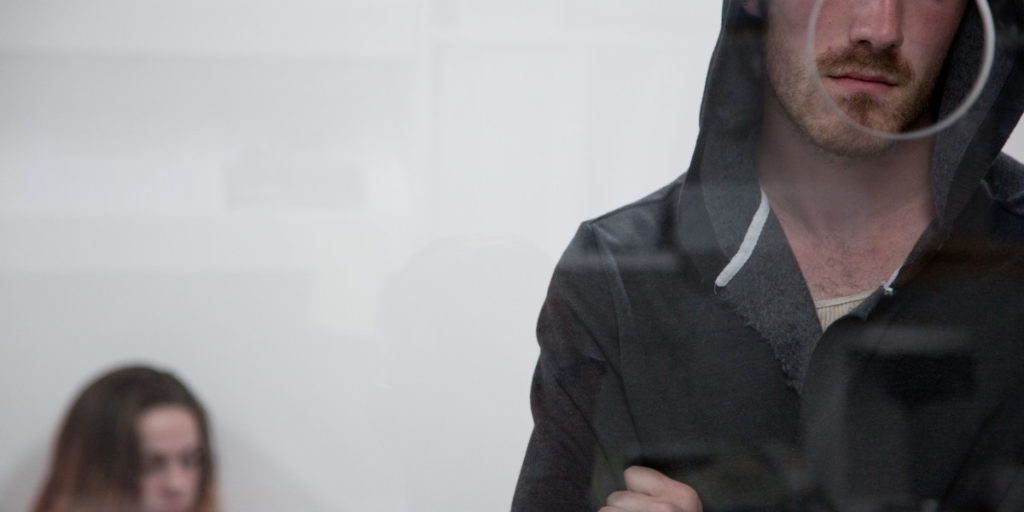
I wondered if calling a movie Werewolf was an attempt to get some sort of specialty horror-movie distributor to bite and buy it sight unseen, like maybe they would think it was an East Coast version of Ginger Snaps.
I got an email from a distributor yesterday… it was a company that specializes in horror and genre stuff. “Sharp Teeth Films.” They’re UK-based and new and that’s the sort of interest that we’re getting.
You mentioned that it was opening in 100 theatres in France, which is sort of amazing; I’m hard pressed to think of a Canadian film opening on 100 screens in Canada.
This is our first feature, and everything is a bit new. My producer says we shouldn’t expect to see any money, and we should move onto the next project. But the film is having a life, and I can travel with it internationally even if no money is coming in. It’s a bit of a strange situation.
In some ways, Werewolf is risky for a debut feature, because the material is downbeat. It doesn’t feel like the proverbial “calling card” film, and it’s also different than a lot of the American indies I see popping up on VOD and Netflix that deal with drug subcultures and addiction – films that are to some extent fantasies or exploitations of that reality.
It doesn’t have a glamorous side. It’s not set in Brooklyn. There’s no actor in it who’s also on a television show. It’s close to being something that distributors would want, but what I think makes it interesting is what stops it from being very saleable. I’ll be interested to see if people in France go to it.
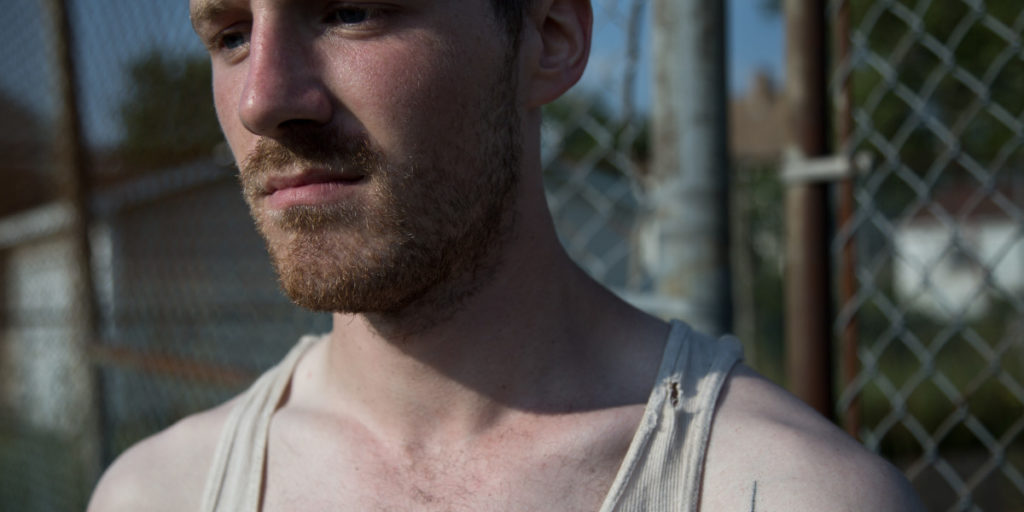
When people watch Werewolf in Paris – or in Toronto – it ends up being an entry point for them into Nova Scotia, or at least aspects of life there. Do you feel that burden of representation making a movie that’s also set in the place that you grew up?
It’s a bit of a counterpoint to what is normally seen of Cape Breton. I haven’t seen Bruce McDonald’s Weirdos yet, but most of the movies shot in Cape Breton are shot in the highlands. Cape Breton is a dichotomy to me: there are the highlands, and I guess you could say there are the lowlands. That’s post-industrial Cape Breton, and that’s where we shot Werewolf. Typically, it’s the more scenic portraits of the place that make it out into the world. There’s a big tourist industry there. For me, growing up in a small town, that’s not my experience at all. Where I was, young people moved away when industry collapsed, or they got stuck there, almost like in a wasteland. That’s what I was trying to capture in Werewolf: the people we knew who never got the chance to leave the island, and were dying young. I think the film is accurate, but I also don’t think that way about the responsibility of representing a place.
One thing that I admire about the film is that it doesn’t condescend to or simplify the problems of people with chemical dependencies, and it also doesn’t try to sanitize the truth of addiction.
Because I live here, and because I drew a lot of inspiration from the place and from my own life, it resulted in more nuance and less judgment. It’s nothing that I was trying to do; I was funnelling things that were real in that environment into the script. Nothing was clear cut, or in any sort of Manichean black-and-white. I didn’t think of it as a film about addicts, either. In Cape Breton there are a lot of dependency problems, and a lot of people on methadone as a part of their everyday life, but for me the methadone was related to other kinds of dependencies in our lives, on other parts of the spectrum. Some people are living more extreme versions of that than others.
I saw the story as being as much about an addictive relationship as an addiction to drugs, or perhaps about how those two dependencies are intertwined.
The basic idea was about that I saw a young couple cutting grass and knocking on doors in my town, and that intrigued me. But there was also the fact that my life was going into a sort of cycle where I was in a toxic relationship and while I was writing, my own life started to mimic the script. My personal stuff took over and the film really became about having an addiction to a person, and having to eliminate that. Everything felt very paralleled, and the love story aspect took over. It’s funny because later, when we were trying to secure locations for the film, like trying to find a pharmacy that we could film at, we ended up sugar-coating the film by telling the people there it was a love story. When I was making it, I was so close to it that I couldn’t see it, but by the time we were doing the sound editing, I was sitting there and thinking “Holy shit, this is a relationship movie.” I was very shocked and very emotional about it.
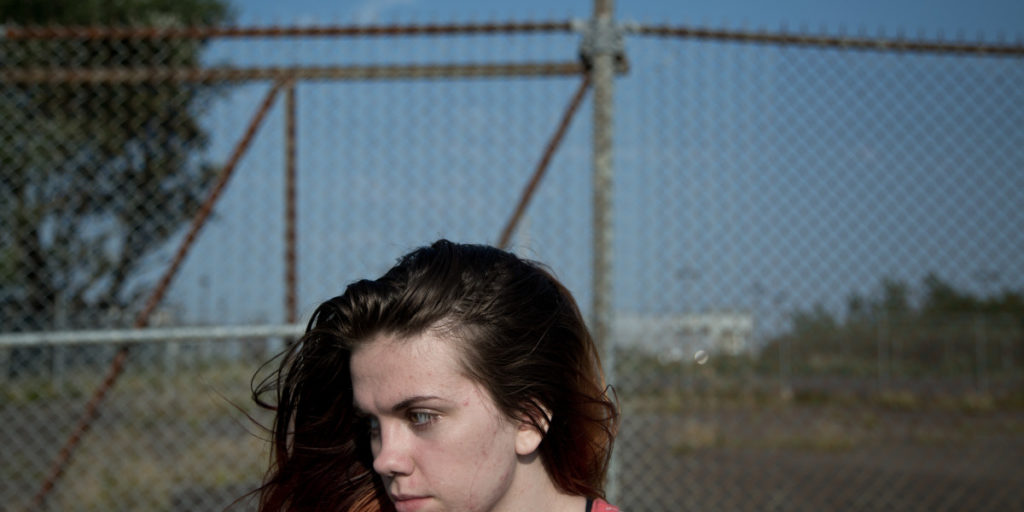
That closeness to the material is reflected in the proximity of the camera, which is extremely intimate, but also abstract; the compositions favor unusual angles and blocking. I’m interested in how you settled on this aesthetic.
I tried not to worry about the fact that we had minimal coverage of a lot of scenes, or that the camera was focused on somebody’s ear the whole time. I wasn’t thinking about making things claustrophobic, or making people experience what the characters were going through – there was no agenda to put the audience through the ringer or to make them learn something. Every time we set up the camera, it was about what frame felt right to me aesthetically and emotionally. I didn’t think about whether we’d be able to cut it together traditionally. On my short films, I had bigger crews, and I was more afraid to commit to those decisions, because I could sense when people thought I was making a bad decision. On Werewolf, my DOP and my producer really supported me, and we all committed to frames that felt interesting. Shooting digital has led me to get a little closer in terms of framing, because I think it looks better that way. Maybe I’m missing film a bit: the feel of wide shots is nicer on film. Shooting tight and in single takes was what we needed here, because we couldn’t control very much beyond that. And if I can’t control everything, I’d rather go in and have a smaller palette.
The image of this couple dragging this lawnmower through town reminded me of the teenagers with the pram in L’Enfant, or of the girl dragging the gas tank home in Rosetta. The Dardennes have this focus in their film on significant objects, and also on work, and I felt a continuity with that side of their cinema in Werewolf.
I come from a culture that’s obsessed with jobs because we don’t have any. We have the highest unemployment in Canada, so everything is about jobs, jobs, jobs. What’s going to get us a job? It’s a huge part of the identity here. It’s a working-class culture – miners and steel-workers – and it lingers in the air. When I watch something by the Dardennes that’s set in Seraing it feels the same, like what I grew up around. I feel a kinship with the worlds they create for sure, and Rosetta is one of my favourite films. As for objects, I never really thought about the symbolism of it. The Dardennes do it so well… I saw them speak one time, and one of them said that symbols are like fish, because they have to remain submerged. If they come out of the water, they die. I’ve thought about that quote a lot.

You talked about the sense of place in Werewolf, and I can’t imagine it’s easy to make movies in the Maritimes on such precise, personal terms. What does the exposure from TIFF mean to your work, and do you think it’s possible that Werewolf is a harbinger of breakthroughs to come?
Would a big festival ever program two East Coast films if there are two that are strong enough? Or three? It’s a small community here, but this year will be a good test. There is a young filmmaker named Winston DeGiobbi who acted one of my shorts who has made a film for $12,000 called Mass For Shut Ins – he does this very underground, low-fi, Harmony Korine-ish, strange provocative stuff. Not sure if he’s on people’s radars, but he should be. There’s also a film that was shot in Cape Breton by my good friend Jacquelyn Mills called In the Waves which is super-experimental and sensory… it’s about her grandmother, who is living in a dying coastal community. And there’s Seth Smith, who’s in the band Dog Day and made a film a few years ago called Low Life. He has a new one called The Crescent. So something is happening in Nova Scotia for sure. It’s a mini-movement and it’s needed because the focus has been very Hollywood North for the past several decades. Halifax is the fourth largest production centre in Canada, even if it’s been destroyed a bit by the cuts to tax credits. A lot of U.S. productions have come there over the years and shaped the industry there. That’s been the aspiration there, to make more Hollywood stuff. That’s been a problem with East Coast cinema but people may be breaking out of that now.

